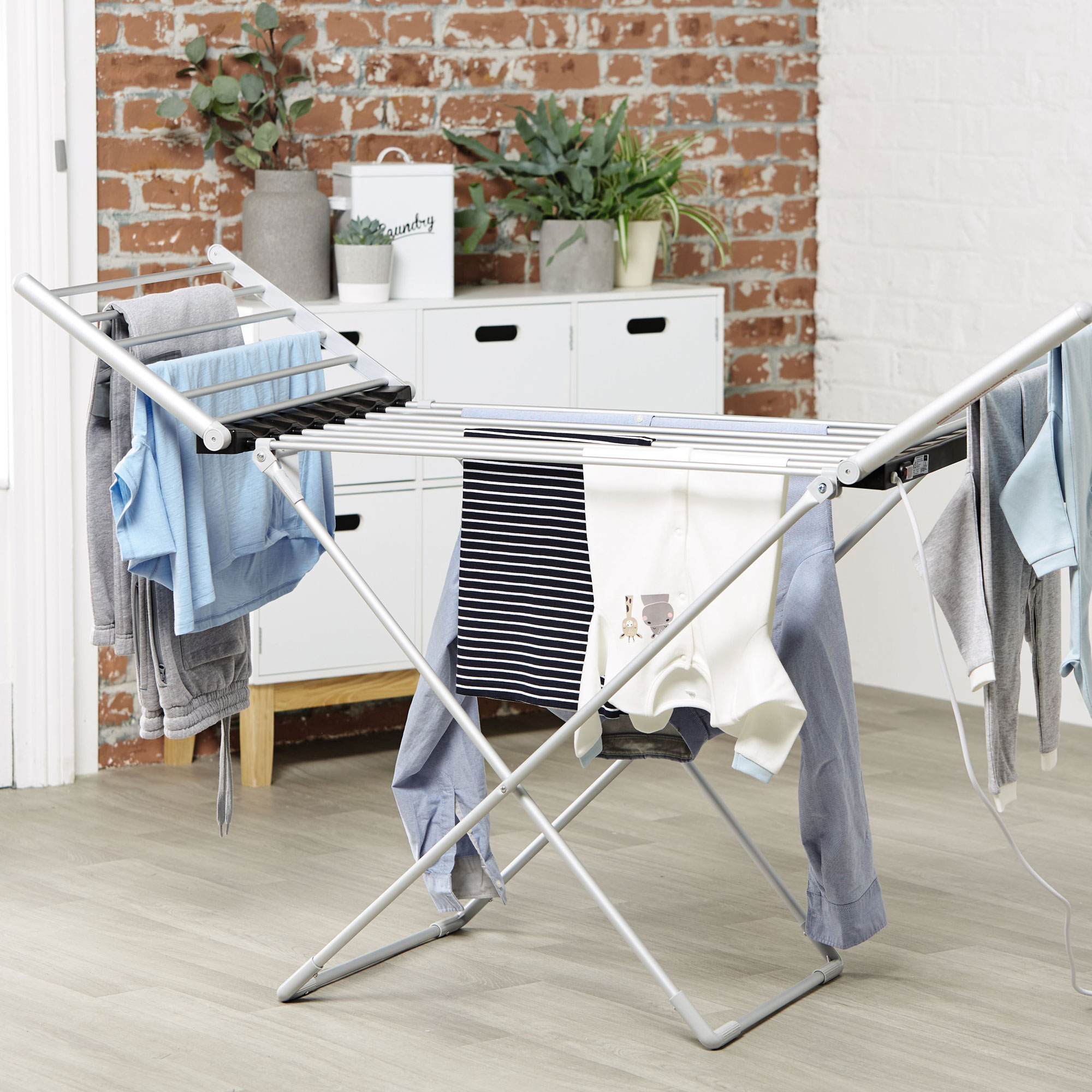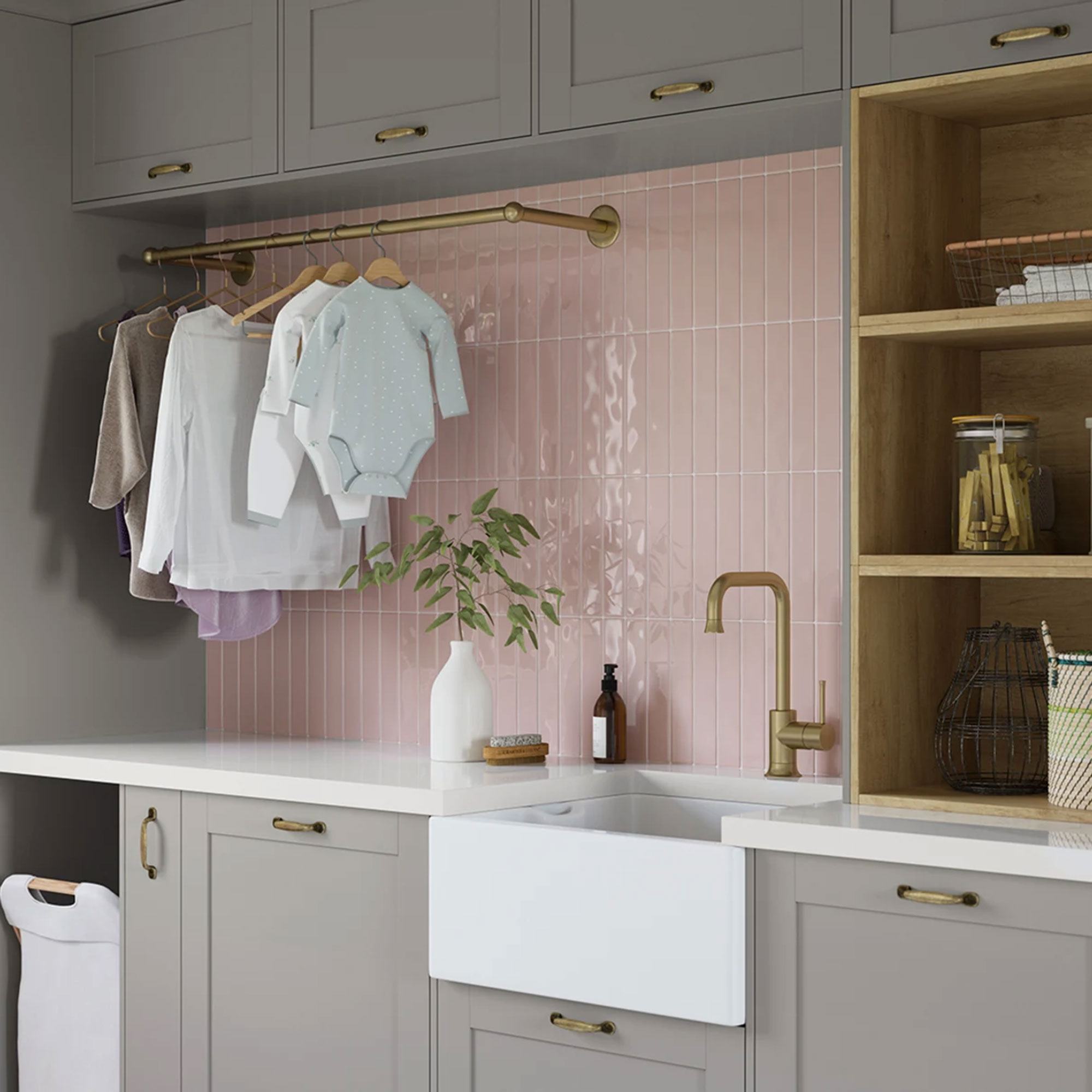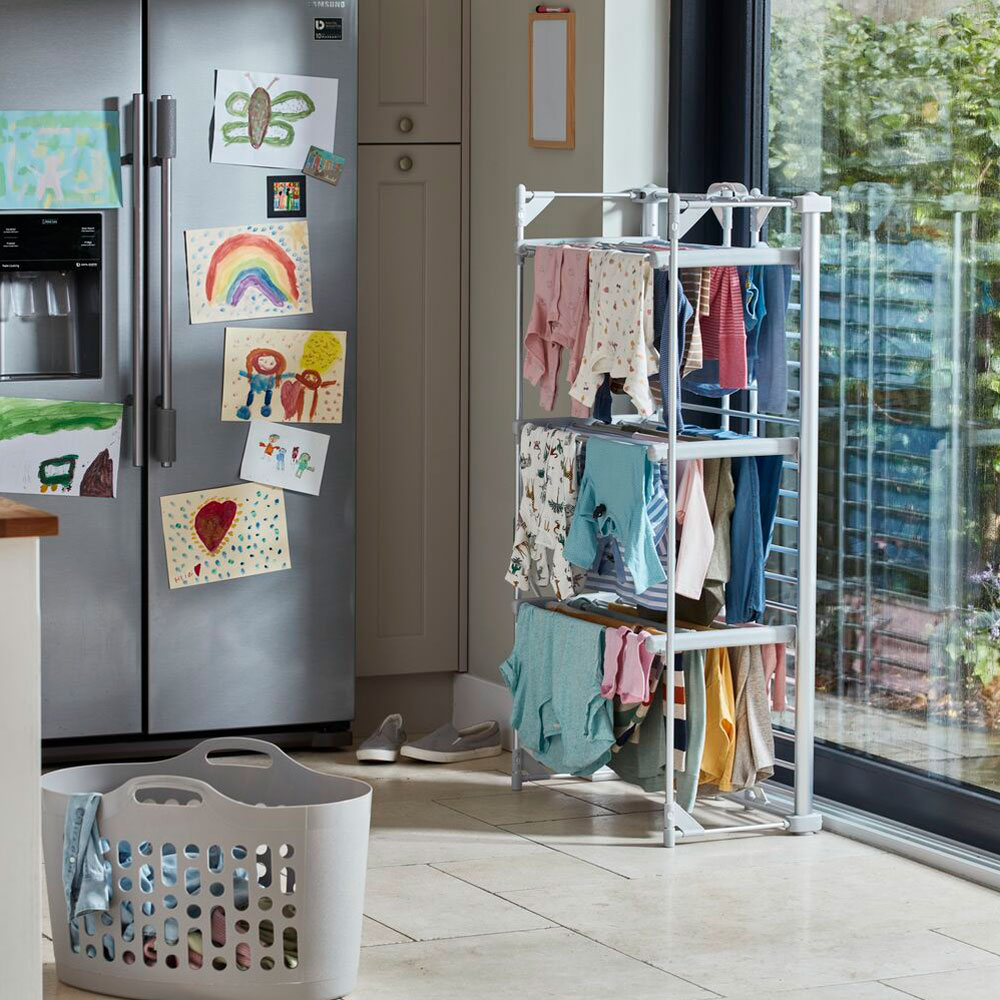Are heated clothes airers expensive to run? How much it costs to dry laundry on a heated dryer
We've worked out how much it costs to run a heated clothes airer and how to save on running costs


This article has been updated to show the new cost to run based on the October Energy Price Cap. It has also been fact-checked and any out-of-date information removed.
Heated airers have long been a lifesaver in winter for tumble-dryer-free homes. However, increasing pressure on household budgets from soaring energy prices has many asking the question 'how much does it cost to run a heated airer?' And 'are they expensive to run?'
The best heated clothes airers have been around for over 10 years, Lakeland launched their first one in 2008. However in the last two years interest in the best heated clothes airers has rocketed, Lakeland noted that sales had increased by 37 per cent in 2021, and said they expect the trend to continue well into 2023.
'Our customers are always looking for easy ways to save money and energy during the winter months, and we’re seeing this happen this year more than ever with energy costs set to rise further,' says Wendy Miranda a spokesperson for Lakeland.

A huge push behind the increasing interest has been linked to spiralling energy costs. While the energy price freeze announced by the government in September will take some pressure of households, bills will still be significantly higher for many families this winter.
The cost to run a tumble dryer has made them off-limits for many families, but is a heated clothes airer cheaper to run than a tumble dryer? We've done the sums to work out on average just how much a heated clothes airer will cost you, and the energy-saving tips to watch out for before investing.
How much does it cost to run a heated clothes airer
Like all electrical devices, different heated airers will use different amounts of energy and take different amounts of time to dry clothes completely.
To work out how much it will cost to run a heated dryer in your own home you will need to know how much you pay for one unit of energy (1kw). You should be able to find this on your energy bill.
Sign up to our newsletter for style inspiration, real homes, project and garden advice and shopping know-how
Following the energy price cap announcement in October the average unit price for electricity has been capped at 27p per kWh, so we have used this figure to illustrate the average amount it could cost to run a heated clothes airer.
Heated clothes dryers will always show how much power they use in watts or kilowatts per hour. However, since most heated airers take 8 to 12 hours to fully dry a load of washing you will need to take this into account.
The basic equation to work out how much it costs to run any appliance is:
Cost= power (kilowatt) x time (hours) x cost of 1kWh
We've used this equation to give you some examples of what the three main type of heated airers will cost to run:
- If you have a 220W winged heated clothes dryer, such as the Robert Dyas heated clothes airer, it should cost less than 50p to dry a load of laundry in eight hours.
- If you have a 300W three tiered heated clothes dryer such as the Lakeland Dry:Soon heated airer which has a drying capacity of 15kg it should cost around 8p to run for an hour, so just over 64p to run for eight hours.
- A 1,000W drying pod should in theory dry clothes faster, so while the running costs would be 34p an hour, it only needs to run for around three hours a day costing 80p a day to run.
Are some heated clothes airers cheaper to run than others?
Heated airers come in a range of different wattages so some will be cheaper to run than others. The cheapest heated airers to run are the 220-watt heated airers with wings. However, it is important to consider the size of heated clothes airer you need carefully so you're not caught out by false economy.
Most of the 220-watt heated airers that are still in stock might be cheaper to run, but can only dry 10kg of laundry. While many of the 300-watt three-tier versions can take 15kg of laundry, while these will cost more, it could still be better value for drying all the clothes you need within an eight-hour timeframe.

Does a heated airer use less electricity than a tumble dryer?
While it will take longer for clothes to dry on a heated clothes airer, you should be able to dry a couple of loads of washing in 8 hours for less than it costs to do a load in a tumble dryer. However, this will all depend on the type of tumble dryer or heated airer that you have, and how long it takes your clothes to dry.
Most tumble dryers use a significant amount of energy - a 9KG vented tumble dryer costs around £1.44 a cycle, adding up to £178.20 a year. In comparison, a 300W heated airer costs just over 64p to dry a full load over eight hours.

How can I cut the cost of running a heated airer?
The best way to cut the cost of running a heated airer is to speed up how long it takes to dry clothes. The less time it is on the less it will cost, and there are a few tricks and add-ons you can purchase to help with this.
- Spin dry clothes before hanging - 'To make drying efficient, make sure your clothes have spun properly in the machine, so excess water has been removed,' says Paul Newman at Housetastic
- Turn clothes around on the airer - As your clothes dry keep moving them around to make sure the heat reaches all of your laundry. Clothes in the middle will usually dry fastest so make sure they all have their turn.
- Invest in a cover - To make a heated airer run more efficiently you can invest in a cover that traps the warm air inside. I tried the Lakeland Dry:Soon coveron my heated airer and it cut drying time so I was able to try some clothes in under 3 hours.
- Choose a heated airer with enough space - While choosing a heated airer with a low wattage might seem like a good energy-saving scheme if it isn't big enough to hold your usual load of laundry in one go it could cost more money in the long run. So look for a low-wattage airer that also has plenty of rack space to dry clothes reasonably quickly.

Rebecca Knight has been the Deputy Editor on the Ideal Home Website since 2022. She graduated with a Masters degree in magazine journalism from City, University of London in 2018, before starting her journalism career as a staff writer on women's weekly magazines. She fell into the world of homes and interiors after joining the Ideal Home website team in 2019 as a Digital Writer. In 2020 she moved into position of Homes News Editor working across Homes & Gardens, LivingEtc, Real Homes, Gardeningetc and Ideal Home covering everything from the latest viral cleaning hack to the next big interior trend.